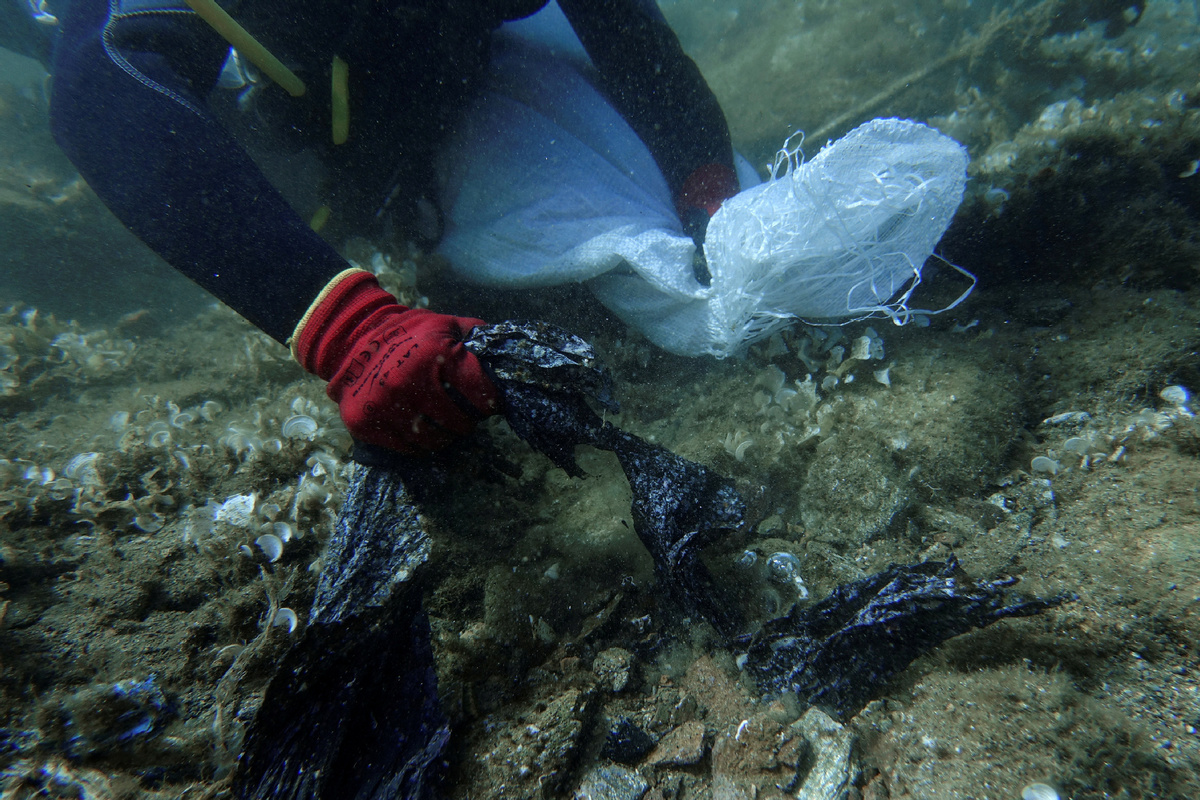Plastic in sea issue worse than feared
By EARLE GALE in London | China Daily Global | Updated: 2020-08-20 09:36
Levels of contamination in oceans are found to be much higher than believed

Environmentalists now believe more than 10 times the amount of plastic is polluting the world's oceans than previously thought.
They updated their estimates after taking measurements in the Atlantic Ocean.
Previously, estimates had been based on the believed volume of mismanaged municipal waste in coastal areas.
The old estimates said between 19 million and 52 million metric tons of plastic had been released into the Atlantic Ocean between 1950 and 2015.
The new measurements found there were between 13 million and 23 million tons of microscopic plastic particles-called microplastics-in the top 200 meters of the Atlantic Ocean. That suggests, when extrapolated to the full depth of the ocean, that there could be around 220 million tons of plastic pollution in the ocean.
Katsiaryna Pabortsava, from the United Kingdom's National Oceanography Centre, was the lead author of the study, which was published this week in the journal Nature Communications.
She told the Guardian newspaper: "Our key finding is that there is an awful lot of very, very small microplastic particles in the upper Atlantic Ocean, much higher than the previous estimate. The amount of plastic has been massively underestimated."
Pabortsava called on policymakers to think about what can be done to prevent plastics making their way into the world's oceans, where they then endanger marine life.
She also said more research is needed to fully understand the harm ocean plastics may be causing the planet.
She said research is needed into the routes those plastics take into our oceans, where they remain for decades as they break down into smaller and smaller particles.
"We really don't know enough about how much plastic is going into the ocean, and where from," she said.
Earlier research published in April showed microplastics are being found in increasingly large quantities on the seabed. And a study in May suggested the volume of microplastics in the oceans has likely been underestimated in the past. A study published in July by the Pew Trusts said the amount of plastic making its way into oceans will likely triple in the next 20 years, if current trends continue.
Science Daily noted that the measurements in the latest study were only of the world's three most common types of plastic-polyethylene, polypropylene and polystyrene-so the volume would likely be even larger if other types of plastics are measured.
The United States-based science-focused website quoted Pabortsava as saying: "Previously, we couldn't balance the mass of floating plastic we observed with the mass we thought had entered the ocean since 1950. This is because earlier studies hadn't been measuring the concentrations of 'invisible' microplastic particles beneath the ocean surface."
























